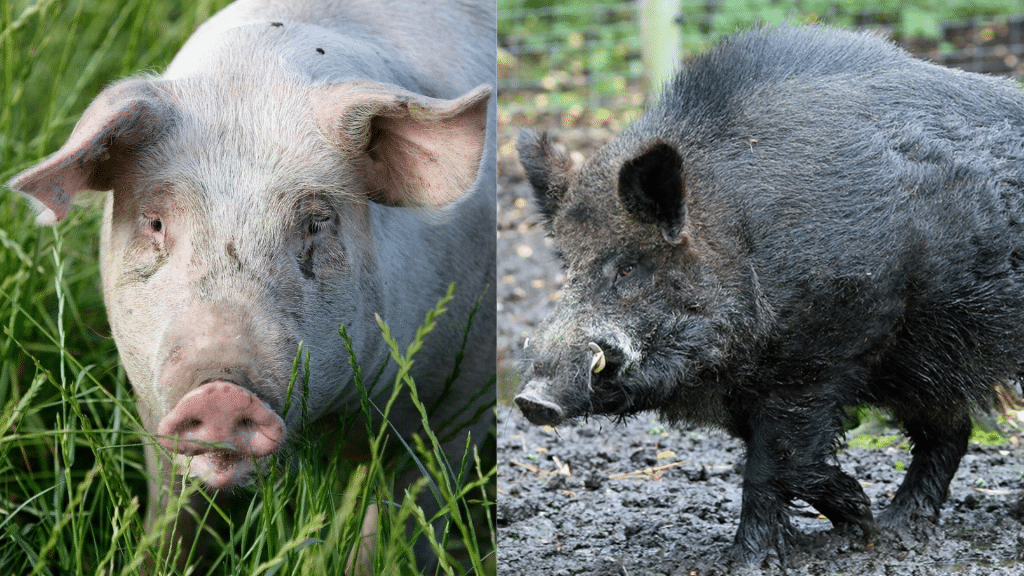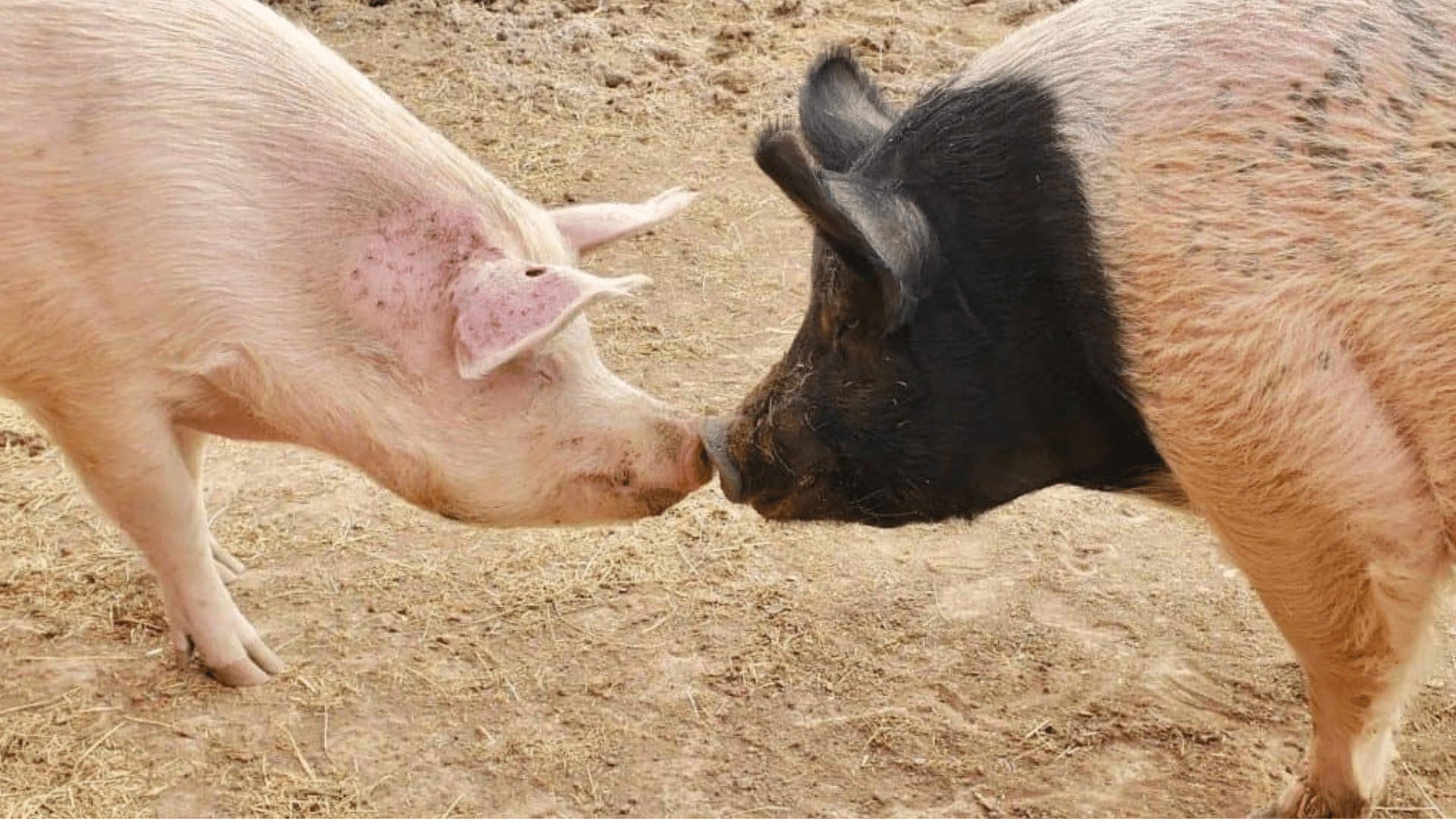Boars and pigs may look similar, but there are key differences, especially in size. Boars are generally larger and more muscular than domesticated pigs.
While both animals have similar body shapes, wild boars often grow bigger due to their need to survive in the wild.
Domesticated pigs, on the other hand, are bred for different purposes, which affects their size.
Understanding the size differences between these animals helps highlight their distinct roles in nature and agriculture.
About Boars and Pigs
Boars and pigs share a common ancestry but have taken different paths in their development. Boars live in the wild, while pigs are mostly kept on farms.
This key difference has led to changes in their bodies, habits, and how they find food.
Boars must hunt and search for meals in forests and fields. They need strength and sharp senses to stay safe from other animals.
Pigs, on the other hand, get regular meals from farm workers. They don’t need the same survival skills as their wild cousins.
| FEATURE | WILD BOAR | DOMESTIC PIG |
|---|---|---|
|
Height |
25-35 inches | 20-30 inches |
|
Weight |
150-400 pounds | 300-700 pounds |
|
Length |
4-6 feet | 5-6 feet |
|
Tail |
Straight, 7-8 inches | Curly, 6-7 inches |
|
Build |
Lean, muscular | Rounder, fatter |
Other Factors That Can Affect Size
The size of boars and pigs isn’t fixed and can vary widely due to many factors beyond just their species. These factors work together to shape how big these animals get.
Understanding these elements helps explain why two animals of the same type might look very different in terms of their overall size and weight.
- Diet: Food quality and quantity directly impact growth. Farm pigs eat balanced meals with proteins and carbs that help them grow fast and big. Wild boars eat roots, plants, and small animals they find, which often results in slower growth and leaner bodies.
- Living Space: The area where these animals live affects their size. Pigs in small pens move less and gain more fat. Boars in forests walk miles each day, building muscle and burning fat, which changes their body shape and size.
- Age: Both animals grow for several years before reaching full size. Young pigs and boars look similar, but as they age, their size differences become clearer. Most reach their full size by age three to five.
- Gender: Males of both species grow larger than females. Male boars can weigh up to 50% more than females. This size gap is smaller in farm pigs but still exists in most breeds.
- Breed Types: Pig breeds show huge size ranges. Yorkshire pigs often reach 700 pounds, while Vietnamese pot-bellied pigs stay under 200 pounds. These breed differences create major size variations.
- Climate: Weather affects how animals grow. In cold areas, pigs and boars tend to build more fat for warmth. In hot places, they stay leaner, which can make them look smaller overall.
- Health: Animal health plays a key role in size. Sick or poorly fed animals grow slower and stay smaller. Healthy animals with good care reach their full size potential faster.
Who is the Largest?
When comparing size between boars and pigs, domestic pigs typically reach larger sizes than wild boars. This size difference occurs mainly because of human influence through selective breeding and controlled feeding.
The careful breeding over many years has created pigs that grow faster and bigger than their wild cousins. Wild boars, in contrast, need to stay quick and agile for survival in forests keeps them leaner.
They must hunt for food and escape from danger, so too much weight would make survival harder. The largest pig ever recorded was Big Bill of Jackson, Tennessee, a Poland-China hog who weighed 2,552 pounds.
No wild boar has come close to this record. This shows how farm life and human care allow pigs to reach sizes that would not be possible in the wild.
Wrapping It Up
Now you know the main differences between boars and pigs. These animals share a family connection but have grown apart through years of wild living versus farm life.
Their body shapes, sizes, and ways of life show how animals can change based on where they live and what they eat.
Next time you see pictures or visit a farm or zoo, you’ll be able to spot whether you’re looking at a wild boar or a domestic pig.
The key points about their size, body shape, and living habits will help you tell them apart easily.
Want to learn more about farm animals and their wild relatives? Leave a comment below with questions or share this article with friends who might find these facts helpful.





















